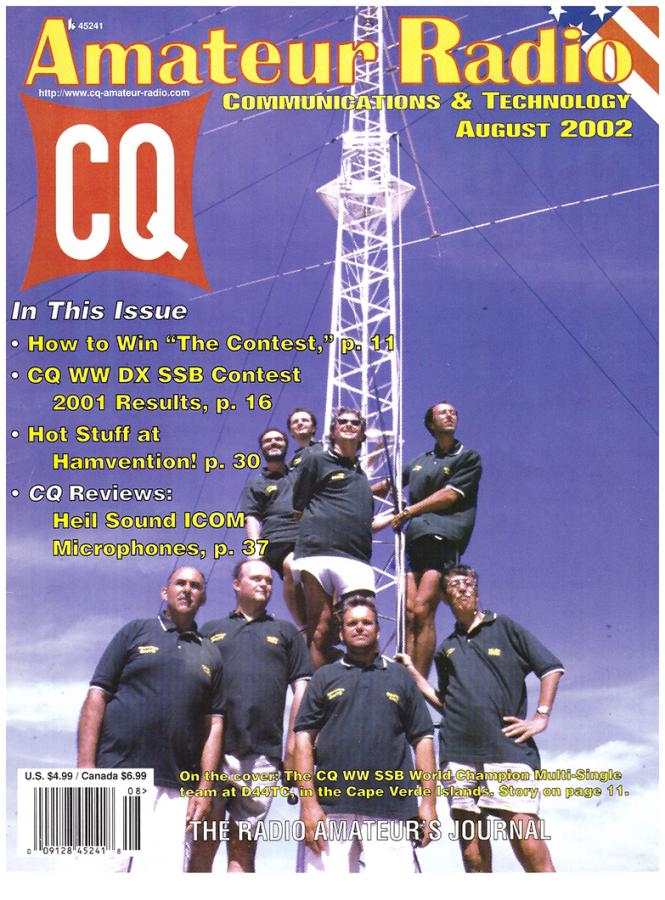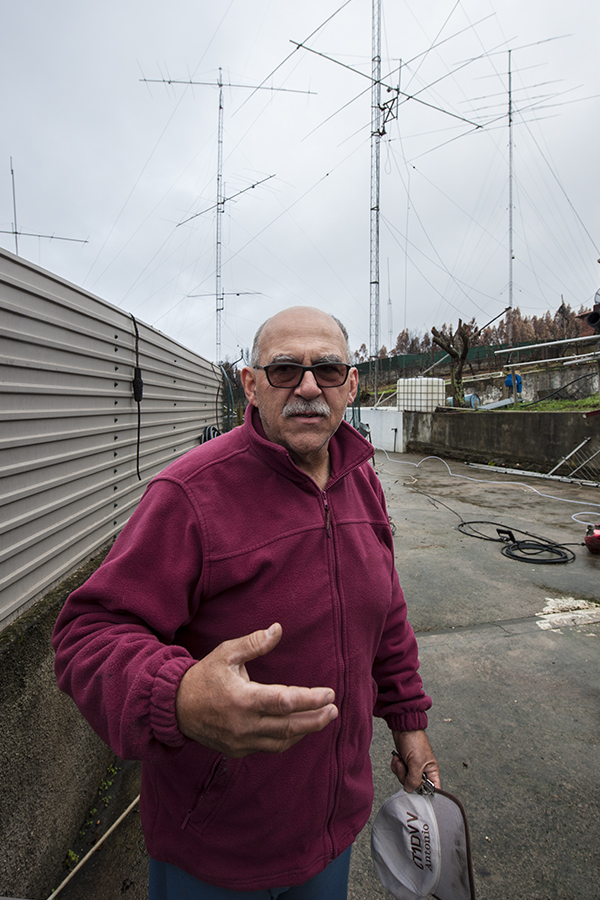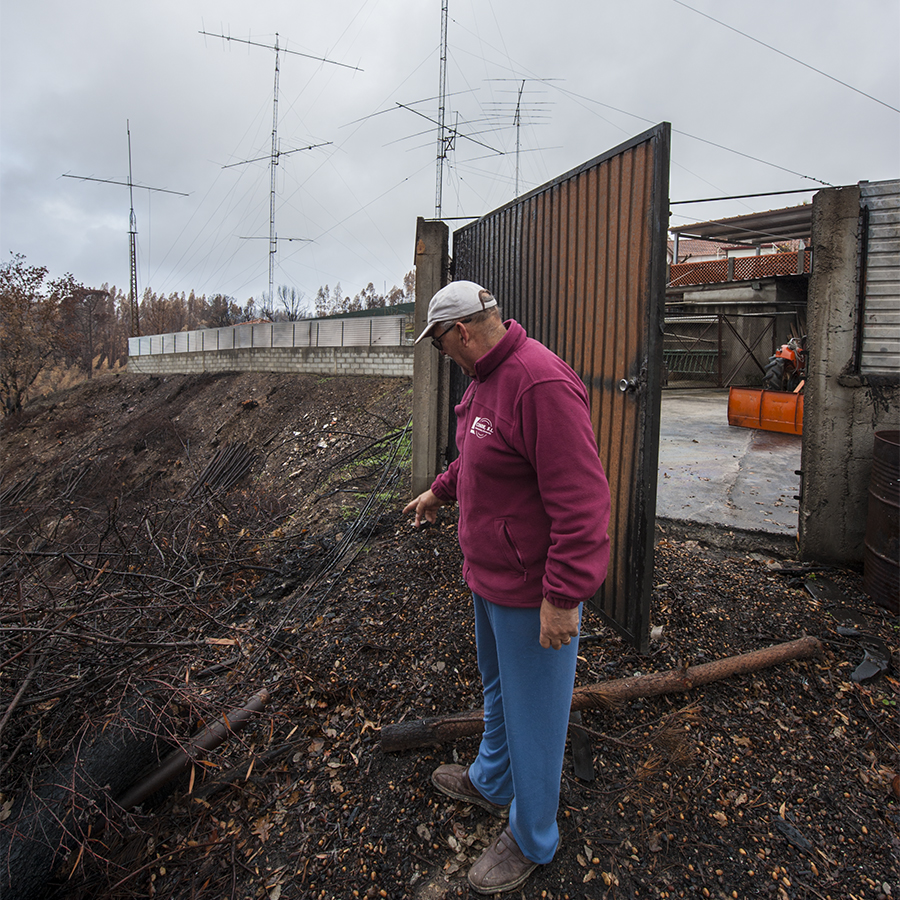CT1DVV Twenty Years Later
Antonio, CT1DVV, does not like publicity and exposure. He has been licensed for 30 years now and apart from contesting from his home, he also participated in group activities, but prefers to keep a low profile. Today he is 66 years old, so his passion for Amateur Radio does not derive from the early school years as in many cases. However, his son, also Antonio, who has the call sign CT1ESV started listening to shortwave radio when he was 11 years old. Antonio, the father, discovered two-way radio communication when he was 18 years old and was taking his private pilot licence while living in Angola, Africa. Later he returned to Portugal and in 1987 received his Amateur Radio licence and the present call sign CT1DVV. His DX interest shot up around 1992 when the propagation was excellent on HF bands. A few years later he moved to the present QTH up the country, near the historical town of Coimbra in central Portugal. In 1996 he built a reasonable contest station and applied for a contest call sign, namely CT8T. I visited the father-son contest team in 1997, twenty years ago. I was not the only visitor to CT8T, some people came here to participate in contests.

The cover of Spanish CQ magazine with Antonio, CT1DVV actually on the air during a contest. Antonio, CT1ESV, was asked by me to be in the picture.
Four years later I was revisiting Cape Verde Islands. On the evening flight to Sal Island I met Mateo, IK2SGC. He was joining a group of operators planning to participate in the CQ WW SSB 2001. In a matter of a few days they set up two antenna towers and a number of radio transceivers in the house of Xara, CT1EKF. He moved to Sal from Portugal and got a permit from the local authorities and the call sign D44TD. The group used the call sign D44TC, which was assigned to Alberto, IV3TAN. I was surprised to see Antonio, CT1DVV in the group and he turned out to be the missing link – Xara, CT1EKF spoke only Portuguese and French, which the majority of the group were Italians. Antonio, CT1DVV was acting interpreter from Portuguese to English, which the Italians understood.

The cover of Spanish CQ magazine with five members of the D44TC 2001 CQ WW SSB team in Sal, Cape Verde Islands. Antonio, CT1DVV, in the center.

Antonio, CT1DVV, on the roof of the house of Xara, D44TD in Sal Island in October 2001. Sal is a flat desert.

The whole team of D44TC after 2001 CQ WW SSB. Antonio, CT1DVV, first from the left in the bottom row. The original photograph was taken on a medium-format Fujichrome diapositive film but the printer's office at CQ Communications (USA) failed to make a correct scan.
In December 2017 I was travelling from Lisbon to Porto in Portugal. I found an attractively looking hotel on one of the Internet portals, off-season price, picturesque location on a river in the hilly region of Penacova, known for mineral water springs. I had sent e-mail messages to a few active CT-operators, including Antonio, CT1DVV. No response from him, but in the morning I checked the qrz.com profile of Antonio. His location on the map was shown a mile or two from the hotel. It was cloudy and drizzling, the whole region east of Coimbra had been charred in October 2017 wildfires. I heard about the fires but did not investigate if this area had been affected. No fun sightseeing, so I tried my luck and drove to the village where Antonio lives. As soon as I parked the car at the gate the dogs started barking. A minute later Antonio looked out of a window and soon opened the gate. He was truly surprised and I was shocked by the sight.

Antonio, CT1DVV, in December 2017 with the antennas behind him. His forest and fruit trees burned down in October 2017. The house was not damaged and he managed to escape the fire.

The residential part of his property is fenced. The receiving antennas and cables outside were totally scorched.

The fire was very intensive due to strong winds. Some aluminium antenna elements were melted down. The destruction is substantial but Antonio does not give up easily.

Inside the radio shack of CT1DVV. Antonio shows the CQ Contest magazine with a cover photograph I took twenty years ago in the same spot.

The equipment is newer and the operator is older, but he is still going strong.
A few years ago Antonio returned to Cape Verde and joined the D4C team for a couple of contests. In the meantime, his son Antonio, CT1ESV, has built a house and a small antenna farm just a stone's throw away and is now a seasoned contest operator, using the short call sign CR6T.

Until next time, I hope it will green again around my house!
Henryk Kotowski, SM0JHF
December 2017


